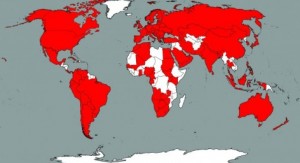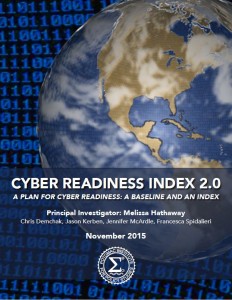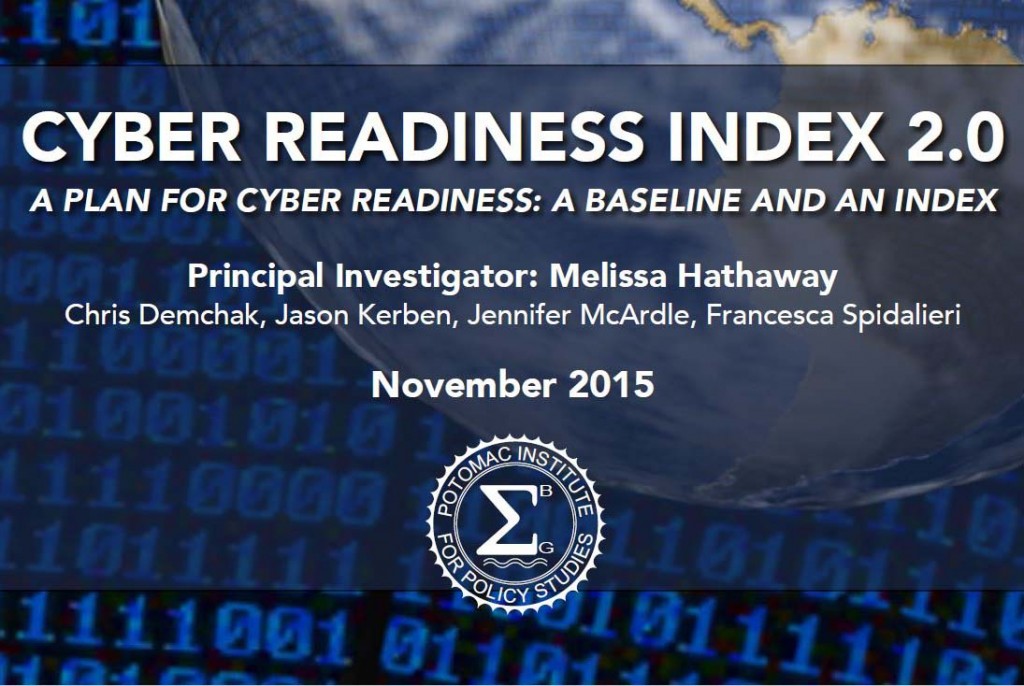Senior Fellow contributes to international publication on countries’ Cyber Readiness
Pell Center Senior Fellow Francesca Spidalieri provided extensive research and analysis for a new international publication on countries’ cyber readiness levels and the practical steps national leaders can take to protect their increasingly interconnected society and digital economy.
Newport, R.I. – The “Cyber Readiness Index 2.0, A Plan for Cyber Readiness: A Baseline and an Index,” published by the Potomac Institute for Policy Studies (PIPS), examines 125 countries and evaluates their maturity and commitment to securing their cyber infrastructure and services. The methodology includes over 70 unique data indicators across seven essential elements: national strategy, incident response, e-crime and law enforcement, information sharing, investments in research and development, diplomacy and trade, and defense and crisis response. By applying this actionable blueprint, countries can better understand their Internet-infrastructure dependencies and vulnerabilities and assess their preparedness to cyber risks.
Dozens of country examples are used to illustrate innovative and multicultural solutions towards becoming cyber ready. As lead author Melissa Hathaway stated, “the Cyber Readiness Index 1.0 was launched in Australia two years ago and has influenced many countries around the world. We hope the CRI 2.0 has even broader impact.”
Today, most nations recognize what fast, reliable, and affordable communication systems and Internet-facing services can yield for their economic growth. But few of them consider the exposure and costs of less resilient critical services, theft of corporate proprietary data and state secrets, and the impact of e-fraud and e-crime—all of which lead to economic and national security instability. Put simply, a country’s cyber insecurity is a tax on growth; and resilient, connected societies must drive modernization with security at its core.
 “Instead of simply studying the problem,” said Pell Center Senior Fellow Francesca Spidalieri, “the CRI represents a new way of approaching the interconnected nature of information communication technologies and offers a framework that we hope will spark international discussion and inspire global interest in addressing the economic erosion from cyber insecurity.” Indeed, the CRI methodology identifies areas where national leaders can improve their country’s current cyber security posture by leveraging laws, policies, standards, and market levers (e.g. incentives and regulations), and implementing other initiatives to preserve the security of their connectivity and protect the value of their economy.
“Instead of simply studying the problem,” said Pell Center Senior Fellow Francesca Spidalieri, “the CRI represents a new way of approaching the interconnected nature of information communication technologies and offers a framework that we hope will spark international discussion and inspire global interest in addressing the economic erosion from cyber insecurity.” Indeed, the CRI methodology identifies areas where national leaders can improve their country’s current cyber security posture by leveraging laws, policies, standards, and market levers (e.g. incentives and regulations), and implementing other initiatives to preserve the security of their connectivity and protect the value of their economy.
In addition, Spidalieri applied a modified version of the CRI 1.0 methodology in her most recent study on the “State of the States on Cybersecurity” to assess current levels of cyber readiness across states in the United States. The study, published by the Pell Center, highlights effective mechanisms and innovative solutions that state governments and their leaders can adopt to better protect critical infrastructure, enhance cyber incident response, promote information sharing, grow their cybersecurity industry, and attract qualified talent to their states. The full report is available for download here.

